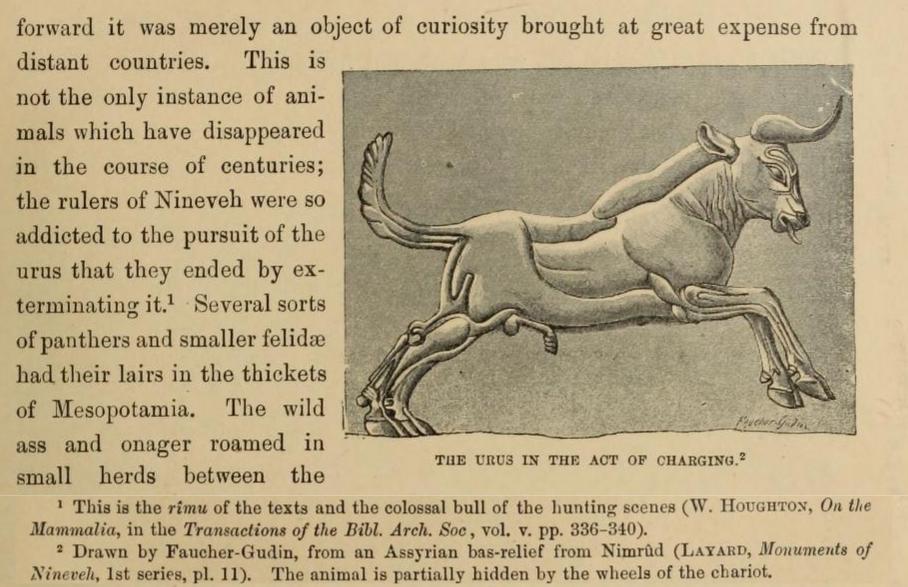Interestingly, despite there being several good answers here, no one has yet raised the possibility that the word ראם (re'em) refers to an animal known as the aurochs or urus (Bos primigenius). (Edit: Bruce James' answer does say "the ראם is a type of cow", which would be consistent with the aurochs conclusion.)
Around the turn of the twentieth century (i.e. 1900), the Akkadian cognate word rimu was discovered. (Wikipedia credits Johann Ulrich Duerst for this discovery, while a YBP article from January 2010 edition (link missing) says it was Henry Rawlinson.) In any case, the idea made an impact quickly as can be seen by, for example, the 1906 Jewish Encyclopedia article:
The allusions to the "re'em" as a wild, untamable animal of great strength and agility, with mighty horns (Job xxxix. 9-12; Ps. xxii. 21, xxix. 6; Num. xxiii. 22, xxiv. 8; Deut. xxxiii. 17; comp. Ps. xcii. 11), best fit the aurochs (Bos primigenius). This view is supported by the Assyrian "rimu," which is often used as a metaphor of strength, and is depicted as a powerful, fierce, wild, or mountain bull with large horns.
The linguistic history is laid out in detail in The Unicorn in the Old Testament (1939) by Allen H. Godbey: (As an aside, this article is a fascinating read on the history of the understanding of the passages, rhinoceros trade, and various other things.)
The decisive factor came with the deciphering of the cuneiform inscriptions... reaching back four thousand years earlier than any Hebrew text that we have, [the texts] give the word rimu repeatedly... It is a gigantic wild ox. The cuneiform ideogram confines him to the mountains.
The unicorn mistranslation derives from the Septuagint. The aurochs, it seems, was typically depicted in Assyrian art from a profile view with gives it the appearance of having one horn. (This image may show the animal in question.) Perhaps lacking a specific word for the aurochs, but being aware of what it looked like, the translators described in as the monkeros ("one-horned") because of the one horn. (The animals was likely locally extinct by then; it went extinct globally in the 16th century.) As Greeks learned of the rhinoceros this word adopted to describe it (or maybe the word was first used for the rhino and adapted to translate re'em since both animals essential feature was having one horn), and eventually changed to rhinokeros.
A number of first millennium commentaries on passages that contain the word re'em are extant. In general, the animal is equated with the rhino, but in a few cases it is compared to a bull, or seen as symbolic of power. The mythical unicorn doesn't enter into the picture until the middle ages.
The aurochs theory is generally accepted as accurate today, which is why many modern translations use "wild ox" - a rough English description of the creature. (Incidentally, it is thought that this is the animal depicted in the Lascaux cave paintings.) "Rhinoceros" is not an entirely impossible translation, but considerably less likely.
A more recent/popular account of much of this material (plus the rise of the unicorn myth) can be found in The Natural History of Unicorns by Chris Lavers.
